Cevennes and Causses |
The Cévennes and Causses form an exceptional geographical and cultural ensemble, spanning several departments and listed as a UNESCO World Heritage site for its vibrant and evolving agro-pastoral landscape. The landscape presents a strong contrast between the Causses, vast arid limestone plateaus characterized by karst relief and steppes, and the Cévennes, a schist and granite massif marked by deep valleys and dense vegetation. The history of both regions is closely tied to sheep transhumance, which has shaped the transhumance paths and the architecture of shepherds' huts. The flora here is highly diverse, ranging from Mediterranean species in the Cévennes valleys to dry grasslands on the Causses. The fauna is emblematic, featuring the return of vultures to the plateaus and the presence of beavers and numerous species in the rivers of the Cévennes.
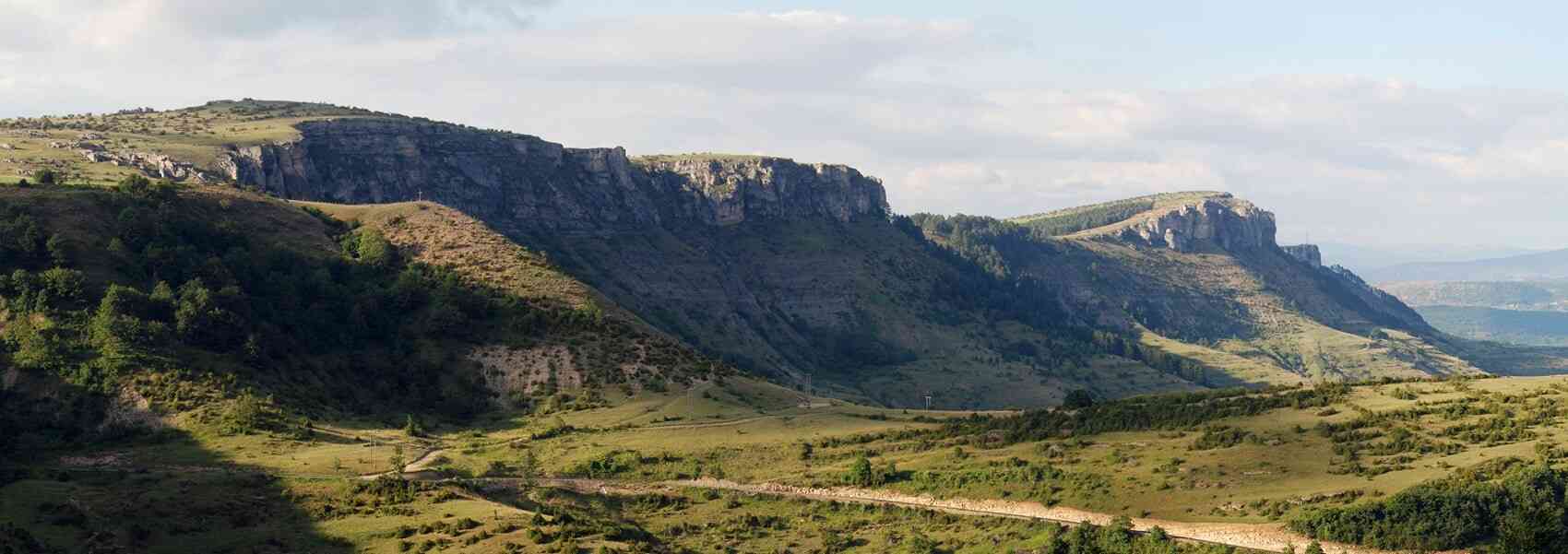
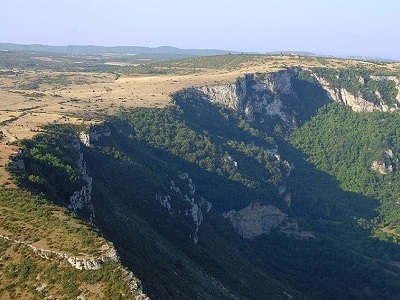 The language of Oc, a special case.
The language of Oc, a special case.
The invasion of the Barbarians (early 5th century) caused the collapse of the Roman Empire. In the south of France, a series of invasions followed. Between the 5th and the 10th century, these were the Vandals, the Visigoths, the Franks, and the Saracens. This warring violence not only leads to inconveniences but also allows different cultures to mix. People anxiously awaited the year 1000 - they indeed expected the end of the world - but things turned out differently. New agricultural techniques emerged, people had more money, the population grew, and well-being improved. With economic well-being, culture (poetry, troubadours, the age of knights) and spirituality (expansion of monastic orders, Templars, Catharism, etc.) also developed.
In short, around the 12th century, a refined culture and civilization appeared in the Languedoc region. However, this was short-lived. According to some sources, the decline was heralded by the crusade against the Albigensians or Cathars (1209). This decline was exacerbated in the 14th century, a dark period marked by the arrival of the plague, numerous wars, and famines.
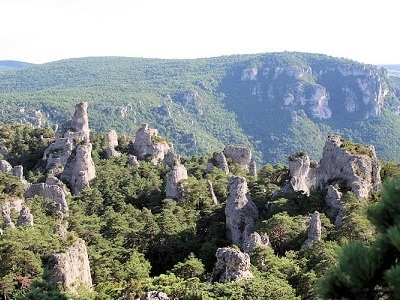 A language is more than just a means of communication. It partly determines our way of thinking and acting. A good command of the language and proper use of the language often confer more cohesion to a population group. Later, the spoken language is not only important but also the written language. Indeed, it is through this medium that we learn much about the past. During the five centuries of Roman domination, the usual language was naturally Latin. Before that, Gallo-Romance was still used.
A language is more than just a means of communication. It partly determines our way of thinking and acting. A good command of the language and proper use of the language often confer more cohesion to a population group. Later, the spoken language is not only important but also the written language. Indeed, it is through this medium that we learn much about the past. During the five centuries of Roman domination, the usual language was naturally Latin. Before that, Gallo-Romance was still used.
In the north, Latin was quickly influenced by Celtic and Gallic elements. After the invasion of the Barbarians, the north was further influenced by the Franks. The south, on the other hand, was more influenced by Romance languages and was impacted by other cultures. In the north of the Central Massif, the "langue d'oïl" was spoken, while in the south, the "langue d'oc" was spoken. From the Pyrenees to the Alps, the language of Oc was already spoken as an autonomous language in the 10th century. Catalonia, Provence, Gascony, Limousin, Auvergne, and Dauphine belonged to the same sphere of influence. The oldest written document in Occitan would be the Chanson de Sainte-Foy d'Agen, dating from around 950. Under the influence of troubadours, the popular language was enriched during the 11th and 12th centuries. During this period, Languedoc had about 500 troubadours who together left about 2600 texts.
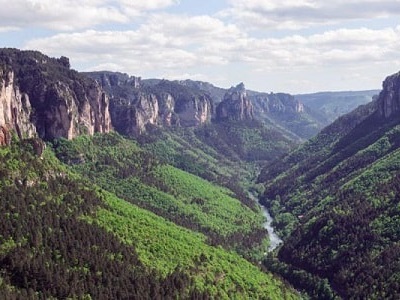 The language of Oc, later called Occitan, was the most important European language. Occitan is closely related to Latin but has clear distinctive traits. Corsican and Catalan - both languages are still spoken today - are also related to the language of Oc. In recent decades, there has been renewed advocacy for the introduction of Occitan as a written and spoken language. Occitan is once again taught at the University of Toulouse, and there are even a few publishing houses in this region that publish works in Occitan. In current linguistic usage - including in the Cevennes - Occitan words and sounds are regularly found. Thus, "lou" is not a proper name, but rather the designation of the definite article "de". Montanha (mountain) means mountain. The "o" is pronounced as "ou", and the "a" at the end of a word is pronounced like "o". Fajas is the word for beech, and font is a source. Pradel means small meadow, and serre is a serrated mountain range. Pailhes is the place where straw is stored, and there are many other things as well. Let us remember for now that many Occitan words and sounds can be found in the southern dialects.
The language of Oc, later called Occitan, was the most important European language. Occitan is closely related to Latin but has clear distinctive traits. Corsican and Catalan - both languages are still spoken today - are also related to the language of Oc. In recent decades, there has been renewed advocacy for the introduction of Occitan as a written and spoken language. Occitan is once again taught at the University of Toulouse, and there are even a few publishing houses in this region that publish works in Occitan. In current linguistic usage - including in the Cevennes - Occitan words and sounds are regularly found. Thus, "lou" is not a proper name, but rather the designation of the definite article "de". Montanha (mountain) means mountain. The "o" is pronounced as "ou", and the "a" at the end of a word is pronounced like "o". Fajas is the word for beech, and font is a source. Pradel means small meadow, and serre is a serrated mountain range. Pailhes is the place where straw is stored, and there are many other things as well. Let us remember for now that many Occitan words and sounds can be found in the southern dialects.
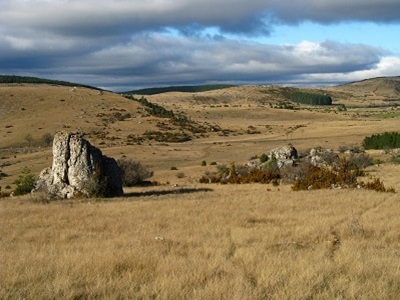 The Cevennes and the Causses are considered regions with very advantageous prices. In a number of small localities, you will find hotels with mediocre comfort but particularly cheap. The real (and crowded) tourist infrastructure is located in the big cities, on the outskirts of the Cevennes and near important rivers (Gardon, Tarn, Jonte, etc.). Almost every locality has at least one restaurant where you can enjoy a complete and tasty meal for little money. The cuisine of the Cevennes and the Causses is not gastronomically spectacular, but it is solid and very bourgeois. You generally eat pure natural products. Dishes prepared with "cepes," a type of large mushroom, goat cheese, or round palardons, and many types of salads prepared with pieces of cheese, bacon, and tomatoes are known. Of course, everything is seasoned with aromatic herbs. The French drink a "common wine" or a better quality country wine.
The Cevennes and the Causses are considered regions with very advantageous prices. In a number of small localities, you will find hotels with mediocre comfort but particularly cheap. The real (and crowded) tourist infrastructure is located in the big cities, on the outskirts of the Cevennes and near important rivers (Gardon, Tarn, Jonte, etc.). Almost every locality has at least one restaurant where you can enjoy a complete and tasty meal for little money. The cuisine of the Cevennes and the Causses is not gastronomically spectacular, but it is solid and very bourgeois. You generally eat pure natural products. Dishes prepared with "cepes," a type of large mushroom, goat cheese, or round palardons, and many types of salads prepared with pieces of cheese, bacon, and tomatoes are known. Of course, everything is seasoned with aromatic herbs. The French drink a "common wine" or a better quality country wine.
The gîtes d'etape are not youth hostels, but similar accommodations accessible to all. They have no age limit, no closing time, but are very welcoming. They can be found near the GR trails. They have a communal kitchen, sanitary facilities (showers and toilets), and blankets. Reservations are not mandatory except for groups. But a phone call beforehand never hurts. You will then be expected, but the confirmation of your reservation will occur on-site when you have placed your backpack on your bed.
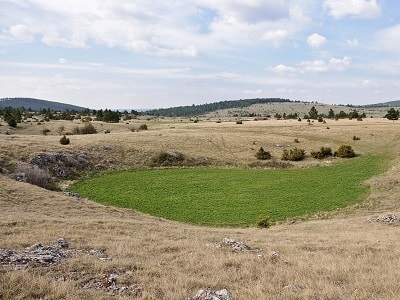 Because the gîtes d'etape (not to be confused with rural lodges or vacation homes) are generally private initiatives, each gîte is different. In recent years, accommodation in gîtes in the Cevennes has improved significantly. They often have a fireplace and sometimes a refrigerator. A relais is a primitive version of a gîte d'etape. There is usually no shower (but running water), space is limited, and sometimes you have to sleep in straw. In the Cevennes and on the Causses, there are many gîtes. They are within reach of your hike, and in some places, there are even two or more. Each year, an updated list is published (available from June).
Because the gîtes d'etape (not to be confused with rural lodges or vacation homes) are generally private initiatives, each gîte is different. In recent years, accommodation in gîtes in the Cevennes has improved significantly. They often have a fireplace and sometimes a refrigerator. A relais is a primitive version of a gîte d'etape. There is usually no shower (but running water), space is limited, and sometimes you have to sleep in straw. In the Cevennes and on the Causses, there are many gîtes. They are within reach of your hike, and in some places, there are even two or more. Each year, an updated list is published (available from June).
Wild camping is not allowed in the Cevennes National Park. However, it is possible to ask a farmer for permission or to pitch your tent near a gîte d'etape. It should be kept in mind that the Cevennes is a very isolated region, and it is rare to find isolated houses or farms. It is also prohibited to make a fire due to the risk of fire. If you are willing to give up minimal comfort, you can also spend the night in a shelter. This is usually an old sheepfold or an abandoned barn. You will need to bring your own sleeping bag.
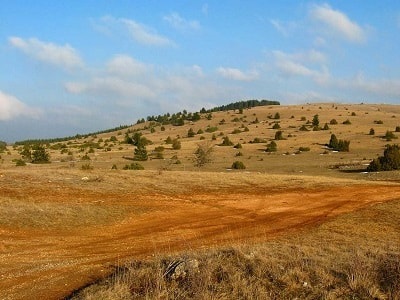 The Cevennes are a mountain massif, a southern extension of the Central Massif. The highest peaks are found in the north, around Mont Lozere (1699 m). In the southern Cevennes, it is Mont Aigoual (1567 m) that attracts the most visitors. Therefore, for convenience, we speak of the northern Cevennes (Mont Lozere) and the southern Cevennes (Mont Aigoual). The term Cevennes has multiple meanings. We can talk about the mountains of the Cevennes, the Cevennes National Park (natural park), or, broadly speaking, the Cevennes as a region. Administratively, 50% of the Cevennes (basically, the northern part) belongs to the Lozere department. Forty percent is in the Gard department (the southern Cevennes), and another 10% belongs to Ardeche.
The Cevennes are a mountain massif, a southern extension of the Central Massif. The highest peaks are found in the north, around Mont Lozere (1699 m). In the southern Cevennes, it is Mont Aigoual (1567 m) that attracts the most visitors. Therefore, for convenience, we speak of the northern Cevennes (Mont Lozere) and the southern Cevennes (Mont Aigoual). The term Cevennes has multiple meanings. We can talk about the mountains of the Cevennes, the Cevennes National Park (natural park), or, broadly speaking, the Cevennes as a region. Administratively, 50% of the Cevennes (basically, the northern part) belongs to the Lozere department. Forty percent is in the Gard department (the southern Cevennes), and another 10% belongs to Ardeche.
Since 1970, the central part has been recognized and protected as a national park. In this Cevennes National Park, which covers an area of 91,400 hectares, only 600 people live and work. The adjacent area covers 237,000 hectares and is home to about 41,000 people. It is immediately clear that this region is very sparsely populated. The creation of a national park primarily involves the protection of nature.
This is why strict government regulations are imposed. For example, only locals are allowed to pick wildflowers, plants, or fruits. Wild camping is prohibited and making a fire is punishable by heavy fines. Hunting is also more regulated. Furthermore, the French authorities wish to preserve the character of a region, mainly to prevent rising land speculation. You should also not think that you are strolling through a well-maintained urban park.
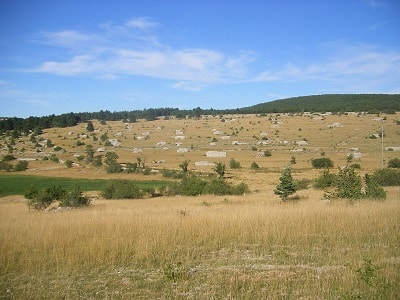 The natural conditions have remained unchanged in the French nature parks, and this is a good thing. To the west of the Cevennes, there are still the Causses. These are arid plateaus (from 800 to 1,200 meters in altitude) that are barely covered with shrubbery or small pines. Sheep graze on these dry fields. In winter, the wind blows over the plains, and during the summer months, the sun burns the last blades of grass. The "big" and "small" Causses are distinguished, but this only reflects the extent of these plateaus.
The natural conditions have remained unchanged in the French nature parks, and this is a good thing. To the west of the Cevennes, there are still the Causses. These are arid plateaus (from 800 to 1,200 meters in altitude) that are barely covered with shrubbery or small pines. Sheep graze on these dry fields. In winter, the wind blows over the plains, and during the summer months, the sun burns the last blades of grass. The "big" and "small" Causses are distinguished, but this only reflects the extent of these plateaus.
The important large Causses are: the Causse Mejean, the Causse du Larzac (1,400 km²), the Causse du Sauveterre, and the Causse Noir (200 km²). Only the latter is more or less wooded. These strict regulations are necessary to protect the fragile nature of the Cevennes. They help preserve the biodiversity, landscapes, and cultural heritage of the region.
The rugged terrain of the Cevennes is characterized by jagged ridges called "les serres". You will notice this immediately as you venture deeper into the land. The deeply cut ravines are called "les valets". Between 600 and 900 meters in altitude, chestnut trees grow, commonly known as "les châtaigniers".
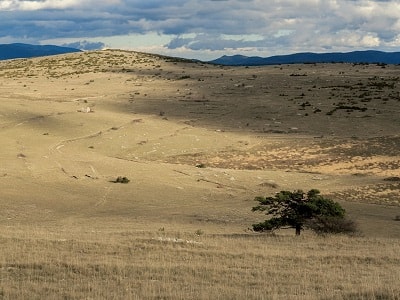 In the northern Cevennes (around Mont Lozere), the subsoil consists of granite. In the south, slate formations rise high above the landscape. Between the two, there are still a few rare limestone rocks, mainly near important rivers.
In the northern Cevennes (around Mont Lozere), the subsoil consists of granite. In the south, slate formations rise high above the landscape. Between the two, there are still a few rare limestone rocks, mainly near important rivers.
Near Hospitalet and Barre-des-Cevennes, there are still a few "small Causses", but they are much less arid than the real Causses. Everywhere, you find high plateaus, rock formations, but also wooded areas. Significant forest belts can be found, especially around Mont Lozere and Mont Aigoual, which is a good thing.
This way, you can walk in the shade, protected from the rays of the sun. Up to about 1,000 meters in altitude, there are, in addition to the chestnut tree (châtaigne), also the evergreen oak, pine, beech, birch, etc. Above the 1,000-meter limit, there are the so-called "garrigues," typical of the entire southern France.
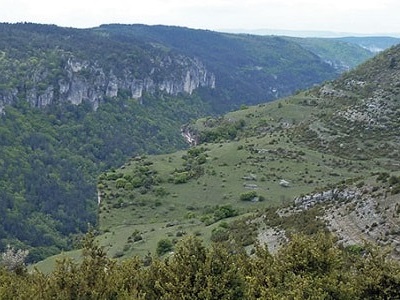 The garrigues are a plant formation characterized by low and dense bushes, such as rosemary, thyme, lavender, savory, etc. These plants are adapted to the arid and warm climatic conditions of the region. The Cevennes are a natural region of great beauty and diversity. They host a rich and varied fauna and flora, as well as spectacular landscapes.
The garrigues are a plant formation characterized by low and dense bushes, such as rosemary, thyme, lavender, savory, etc. These plants are adapted to the arid and warm climatic conditions of the region. The Cevennes are a natural region of great beauty and diversity. They host a rich and varied fauna and flora, as well as spectacular landscapes.
On the slopes of the highest mountains, the vegetation becomes sparser. These "garrigues" are mainly composed of: junipers, heathers, box shrubs, and heathers. Even in the interior of the Cevennes, there are some remarkable regions, including: the Vallee Française, the Montagne de la Vieille Morte, the Montagne du Bouges, the Vallee Borgne, etc. There is no shortage of landscape diversity in the Cevennes.
The Causses have a porous subsoil. It consists of limestone and marl (fine limestone residues that have been mixed with clay). This is why you find many caves, rivers, and underground holes in these regions. The high plateaus are traversed by deeply carved riverbeds. The poor soil is not suitable for agriculture. You will find flocks of sheep there. They produce wool, meat, and cheese (goat cheese and Roquefort).
Of course, it is always a small-scale approach. You will not find real large farms here. The Causses are also characterized by "lavognes" or "lavagnes". These are artificial ponds that serve as drinking water reservoirs for animals. The "sotchs" are, on the other hand, natural ponds with a bit of greenery around. Sometimes, the limestone formations can take strange and impressive shapes. You will find them near canyons, the valleys deeply carved by erosion. The terms Causses and Cevennes are often confused. Broadly speaking, the inhabitants of the Causses will also refer to themselves as Cevenols (the inhabitants of the Cevennes).
The Cevennes and the Causses are a natural region of great beauty and diversity. They host a rich and varied fauna and flora, as well as spectacular landscapes.
Former holiday hotel with a garden along the Allier, L'Etoile Guest House is located in La Bastide-Puylaurent between Lozere, Ardeche, and the Cevennes in the mountains of Southern France. At the crossroads of GR®7, GR®70 Stevenson Path, GR®72, GR®700 Regordane Way, GR®470 Allier River springs and gorges, GRP® Cevenol, Ardechoise Mountains, Margeride. Numerous loop trails for hiking and one-day biking excursions. Ideal for a relaxing and hiking getaway.
Copyright©etoile.fr